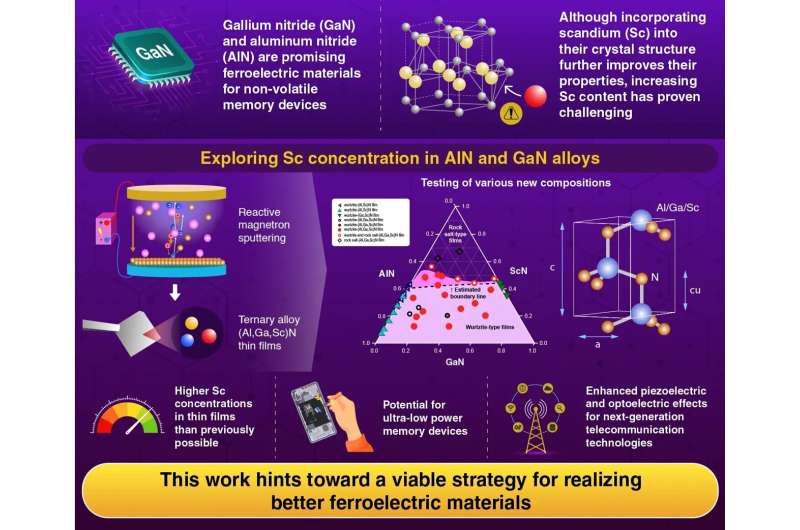Researchers at the Institute of Science Tokyo have developed scandium-rich (Al,Ga,Sc)N thin films with record-low switching voltages, unlocking new possibilities for non-volatile memory, high-frequency 6G filters, and optical computing—all with significantly reduced power consumption.

In a significant leap for next-gen memory and communication technologies, researchers from the Institute of Science Tokyo have developed (Al,Ga,Sc)N thin films with the highest-ever concentration of scandium (Sc), opening new possibilities for ultra-low-power memory, 6G noise filters, and optical computing.
Led by Professor Hiroshi Funakubo, the team used reactive magnetron sputtering to deposit ternary alloy films onto silicon substrates. By precisely adjusting deposition parameters and alloy ratios, the researchers overcame longstanding stability limitations associated with high scandium incorporation in aluminum nitride (AlN) and gallium nitride (GaN) crystals.
AlN and GaN—materials widely used in LEDs—naturally possess switchable polarization, making them suitable for non-volatile ferroelectric memories. These memory devices retain data without constant power, which is crucial for battery-efficient mobile technologies. However, their high operating voltages have remained a bottleneck.
The team demonstrated that introducing small amounts of GaN into AlN structures expanded their ability to accommodate scandium. This tuning significantly reduced the coercive electric field (Ec) required to switch polarization—from 5.8 MV/cm down to just 1.8 MV/cm—enabling ultra-low-power operation. According to the researchers, this value is among the lowest recorded for wurtzite-structured AlN/GaN-based films.
Beyond ferroelectric memory, the thin films showed enhanced piezoelectric and optoelectric properties, making them viable for high-frequency filters in 6G communications and ultra-low-power optical computing systems. The research also mapped out the phase diagram of the AlN–GaN–ScN system, identifying a previously unexplored region where ferroelectric behavior is stable at higher scandium contents.
These findings could directly impact the development of more efficient, low-voltage memory chips and next-gen communication systems. The breakthrough blends material innovation with compatibility for existing semiconductor processes, positioning (Al,Ga,Sc)N thin films as a key material in the evolution of future electronic and photonic devices.







